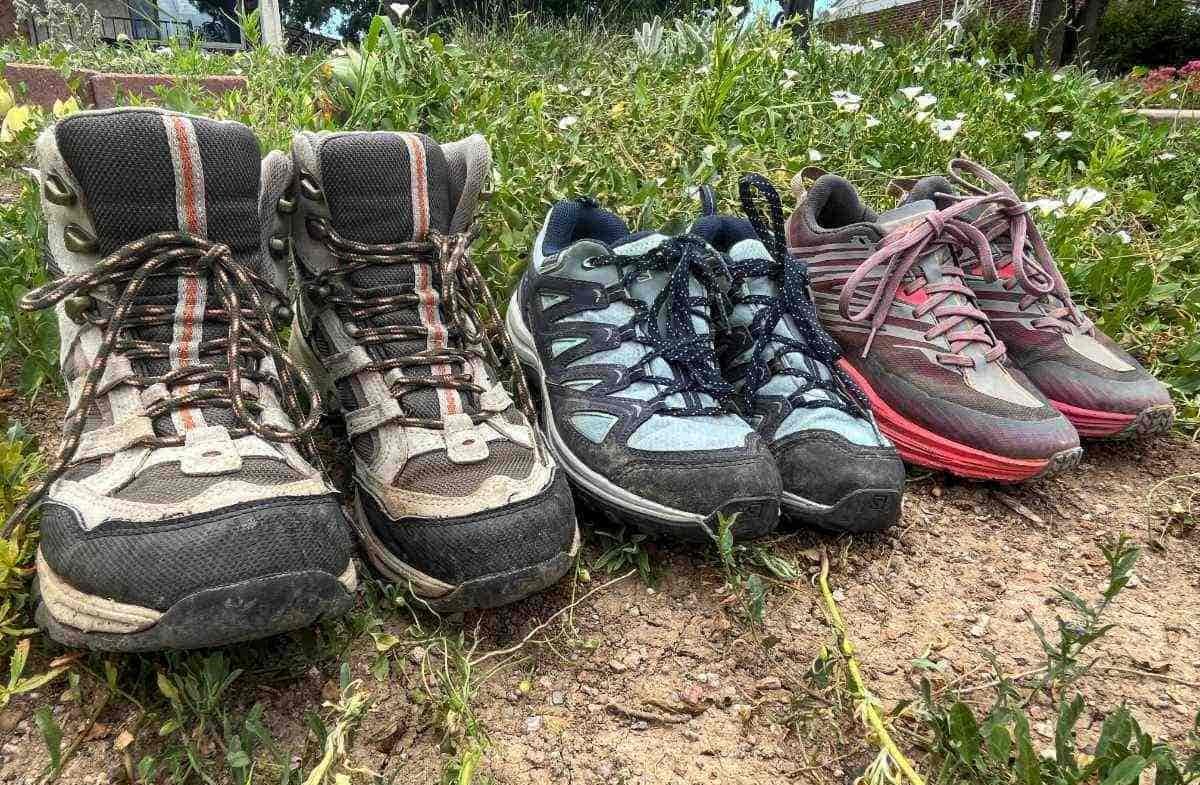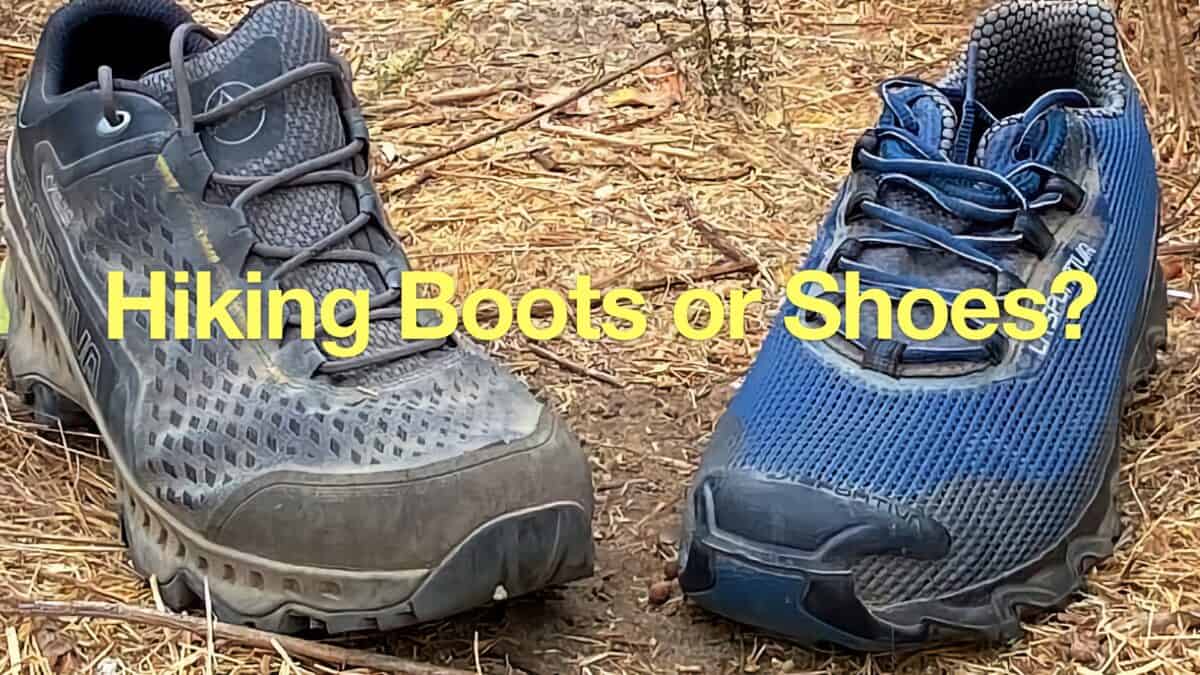Introduction
As outdoor enthusiasts, we often find ourselves questioning the gear we invest in, especially when it comes to footwear. A common query that arises is, “Can you use trail running shoes for hiking?” This question is particularly relevant for those who enjoy both activities and are looking to maximize their equipment without breaking the bank. In this comprehensive guide, we’ll delve into the suitability of trail running shoes for hiking, exploring their features, benefits, and limitations. We’ll also share real-world experiences, case studies, and expert advice to help you make the best decision for your next adventure.
Trail Running Shoes vs. Hiking Boots: What’s the Difference?
Before we dive deeper, it’s essential to understand the primary differences between trail running shoes and hiking boots. Both types of footwear serve distinct purposes, each designed to cater to specific activities and terrains.
Design and Construction
Trail running shoes are typically lightweight with a breathable mesh upper, designed to provide a snug feel for better agility and speed on uneven trails. Conversely, hiking boots usually feature a sturdier construction with a higher ankle support, creating a more rigid frame to protect your feet and offer stability on rocky or steep terrains.
Traction and Grip
The outsoles of trail running shoes are designed for grip on softer surfaces, while hiking boots often feature deeper lugs, allowing for better traction on rocky or muddy trails. This difference in design significantly impacts performance depending on the trail conditions.
Cushioning and Support
Trail running shoes often prioritize cushioning and shock absorption to mitigate the impact of running. Hiking boots, however, focus more on providing ankle support and stability, essential for traversing uneven ground. This can be crucial in preventing injuries during longer hikes.

Real-World Experiences: Using Trail Running Shoes for Hiking
Case Study 1: A Weekend Adventurer’s Perspective
Jane, an avid weekend adventurer, prefers trail running shoes for her hiking expeditions. During a recent trip to the Appalachian Trail, she opted for a pair of trail runners instead of her usual hiking boots. She found the lightweight nature of her shoes significantly increased her speed and comfort during the hike. However, she noted that on rocky sections, she felt more vulnerable, and at the end of the day, her feet were slightly sore due to the lack of ankle support.
Case Study 2: Hiking in the Pacific Northwest
Another adventure comes from Mark, who tested trail running shoes while hiking in Oregon’s Cascades. He reported that the shoes excelled in muddy conditions, providing excellent traction and drainage. However, after several hours on a rugged path, he wished for more cushioning, especially for his knees. Mark concluded that while trail running shoes can be suitable for shorter hikes, they may not provide the necessary support for more challenging terrains.

Pros and Cons of Using Trail Running Shoes for Hiking
Pros
- Lightweight: Trail running shoes are generally much lighter than hiking boots, allowing for quicker movement and reduced fatigue.
- Breathability: The materials used in trail running shoes often allow for increased airflow, keeping your feet cool during warm hikes.
- Quick-Drying: Many trail running shoes are designed with fast-drying materials, which is beneficial in wet conditions.
- Versatile: They can be used for both running and light hiking, making them a great multi-sport option.
Cons
- Lack of Support: Trail running shoes do not provide the same level of ankle support as traditional hiking boots.
- Less Durability: They may wear out faster on rugged terrain, where boots would typically offer more protection.
- Reduced Traction: In some cases, the tread pattern may not be as effective on slippery or rocky surfaces.
- Not Ideal for Heavy Loads: They may not provide the stability needed when carrying a heavy backpack.

Comparison Table: Trail Running Shoes vs. Hiking Boots
| Feature | Trail Running Shoes | Hiking Boots |
|---|---|---|
| Weight | Lightweight | Heavier |
| Ankle Support | Low | High |
| Cushioning | More | Less |
| Traction | Medium | High |
| Breathability | High | Medium |
| Best For | Short runs and trails | Long hikes and rough terrain |
Tips for Choosing Between Trail Running Shoes and Hiking Boots
Consider Your Activity Level
Think about how you plan to use your footwear. If you’re primarily a trail runner who hikes occasionally, investing in durable trail running shoes might be a practical choice. However, if hiking is your primary activity, consider investing in a solid pair of hiking boots.

Assess Terrain and Conditions
Analyze the terrains you plan to hike. For well-maintained trails, trail running shoes could be perfect. However, if you’re tackling rocky or uneven paths, hiking boots may provide the stability and grip required.
Evaluate Your Gear Load
If you plan to hike with a heavy backpack, opt for a sturdier shoe that offers more support. Trail running shoes may not hold up as well under heavy loads compared to hiking boots.

Product Highlights: Recommended Trail Running Shoes for Hiking
1. Salomon Speedcross 5
The Salomon Speedcross 5 is renowned for its aggressive traction and lightweight design. Perfect for muddy trails, this shoe provides excellent grip and comfort for day hikes. Users praise its cushioning but warn about the lack of arch support for prolonged wear.
2. HOKA ONE ONE Challenger ATR 6
The HOKA ONE ONE Challenger ATR 6 offers a cushioned ride with a wider toe box. It performs well on both trails and roads, making it versatile for those who like to switch it up. Reviewers note the shoe’s excellent shock absorption but mention that it can feel bulky for some.

3. Altra Lone Peak 5
The Altra Lone Peak 5 is celebrated for its zero-drop platform, providing a natural foot position. With a rugged outsole and a breathable upper, these shoes are favored by hikers looking for comfort on long treks. Many find them exceptionally durable, though others note they can feel less stable on uneven terrain.
Frequently Asked Questions (FAQs)
1. Can trail running shoes handle rocky terrain?
While trail running shoes can manage rocky terrain, they may not provide the same level of protection as hiking boots. If you frequently hike on rocky trails, consider hybrid options or dedicated hiking footwear for added support and stability.

2. Are trail running shoes good for all-day hikes?
They can be good for all-day hikes, especially on well-maintained trails. However, for longer excursions or challenging terrains, hiking boots are generally preferred due to enhanced ankle support and durability.
3. Do trail running shoes provide enough grip for wet conditions?
Many trail running shoes feature specialized treads designed to offer grip in wet conditions. However, the effectiveness can vary between models. It’s wise to read reviews about specific shoes’ performance in wet weather.
4. How do I care for my trail running shoes?
Regularly clean your shoes to maintain breathability and traction. Remove dirt with a damp cloth and allow them to air dry away from direct sunlight. Avoid machine washing, as it can damage the materials.
5. What type of socks should I wear with trail running shoes?
Opt for moisture-wicking and padded socks to enhance comfort and prevent blisters. Look for socks made from synthetic materials or merino wool for added performance.
6. Can I use hiking boots for trail running?
While it’s possible to use hiking boots for trail running, they can be heavier and less responsive than trail running shoes. This can lead to fatigue over time, especially on longer runs.
7. Are trail running shoes waterproof?
Some models offer waterproof features, but many are designed for breathability rather than water resistance. If you frequently hike in wet conditions, consider shoes specifically marketed as waterproof.
8. How long do trail running shoes last?
The lifespan of trail running shoes can vary based on usage and terrain. On average, they last 300-500 miles before showing significant wear. Regular inspections for signs of damage will help you gauge when to replace them.
9. Can trail running shoes be used as everyday sneakers?
Yes, many people find trail running shoes comfortable enough for everyday wear, especially for those who appreciate a sporty aesthetic and seek cushioning in their daily activities.
10. How should trail running shoes fit?
They should fit snugly but allow for some movement in the toes. A good rule of thumb is to ensure there’s about a thumb’s width of space between the end of your longest toe and the front of the shoe.
11. Can I return trail running shoes if they don’t work for hiking?
Most retailers offer return policies that allow you to return shoes if they do not meet your expectations. Always check the specific retailer’s policy before purchase to ensure you can return or exchange them if needed.
Conclusion
In conclusion, while trail running shoes can be suitable for hiking, especially on well-maintained paths and shorter excursions, they come with limitations regarding support and durability when compared to traditional hiking boots. Evaluating your personal needs, hiking terrains, and activity levels will ultimately guide your choice. Remember, the best hiking footwear is one that prioritizes your comfort and safety while allowing you to enjoy the great outdoors to the fullest. Happy hiking!